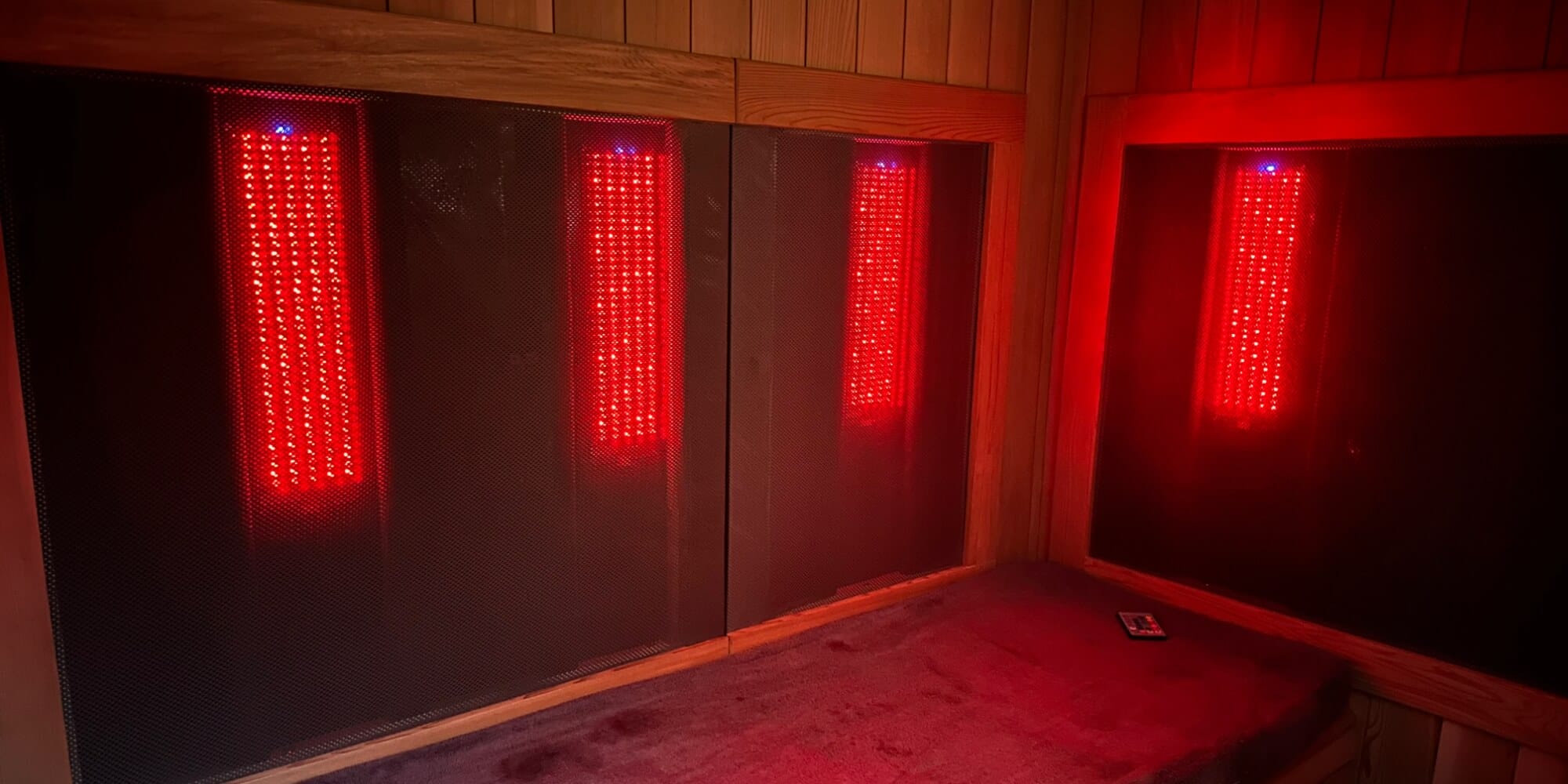Infrared saunas offer a variety of health benefits, including relieving stress and tension, improving recovery and circulation, temporary pain relief, increasing resistance to illness and more.
On the visible side of the light spectrum, red light also offers distinct health benefits — especially in the realm of skin health — that can complement the benefits of infrared radiation.
In this article, I’ll share the potential benefits of combining these two types of light and introduce you to the Sunlighten mPulse Smart Sauna, which features both red and full-spectrum infrared heating panels.
Before we get into the nitty-gritty, here’s a brief overview of the benefits of red and infrared light.
| Benefit | Red Light | Infrared Light |
|---|---|---|
| Anti-inflammatory effects | ★★★ | ★★★ |
| Blood pressure reduction | ☆☆☆ | ★★★ |
| Cardiovascular health | ☆☆☆ | ★★★ |
| Detoxification | ★★★ | ★★★ |
| Eye health | ★★★ | ☆☆☆ |
| Hair growth | ★★★ | ☆☆☆ |
| Immune system support | ☆☆☆ | ★★★ |
| Improved cellular function | ★★★ | ★★☆ |
| Improved sleep | ★★☆ | ★★☆ |
| Increased blood circulation | ★☆☆ | ★★★ |
| Pain relief | ★☆☆ | ★★★ |
| Reduced stress and tension | ★★☆ | ★★★ |
| Skin rejuvenation | ★★★ | ★★☆ |
| Weight loss | ☆☆☆ | ★★★ |
As you can see in the table above, red light offers several unique health benefits, so combining red and infrared ensures you can get the best of both worlds.
Benefits of Adding Visible Red Light to an Infrared Sauna
As I discuss in my article about the health benefits of infrared saunas, infrared light is renowned for its deep-tissue penetration and circulation-boosting properties.
Red light therapy, on the other hand, is a powerhouse in skin rejuvenation, cellular function, and mental health support.
Red and infrared light therapy have distinct mechanisms of action and benefits, so combining them can result in a synergistic effect that maximizes their potential advantages.
Here are some specific benefits that red light adds when combined with infrared light in a sauna.
1. Anti-Inflammatory Effects
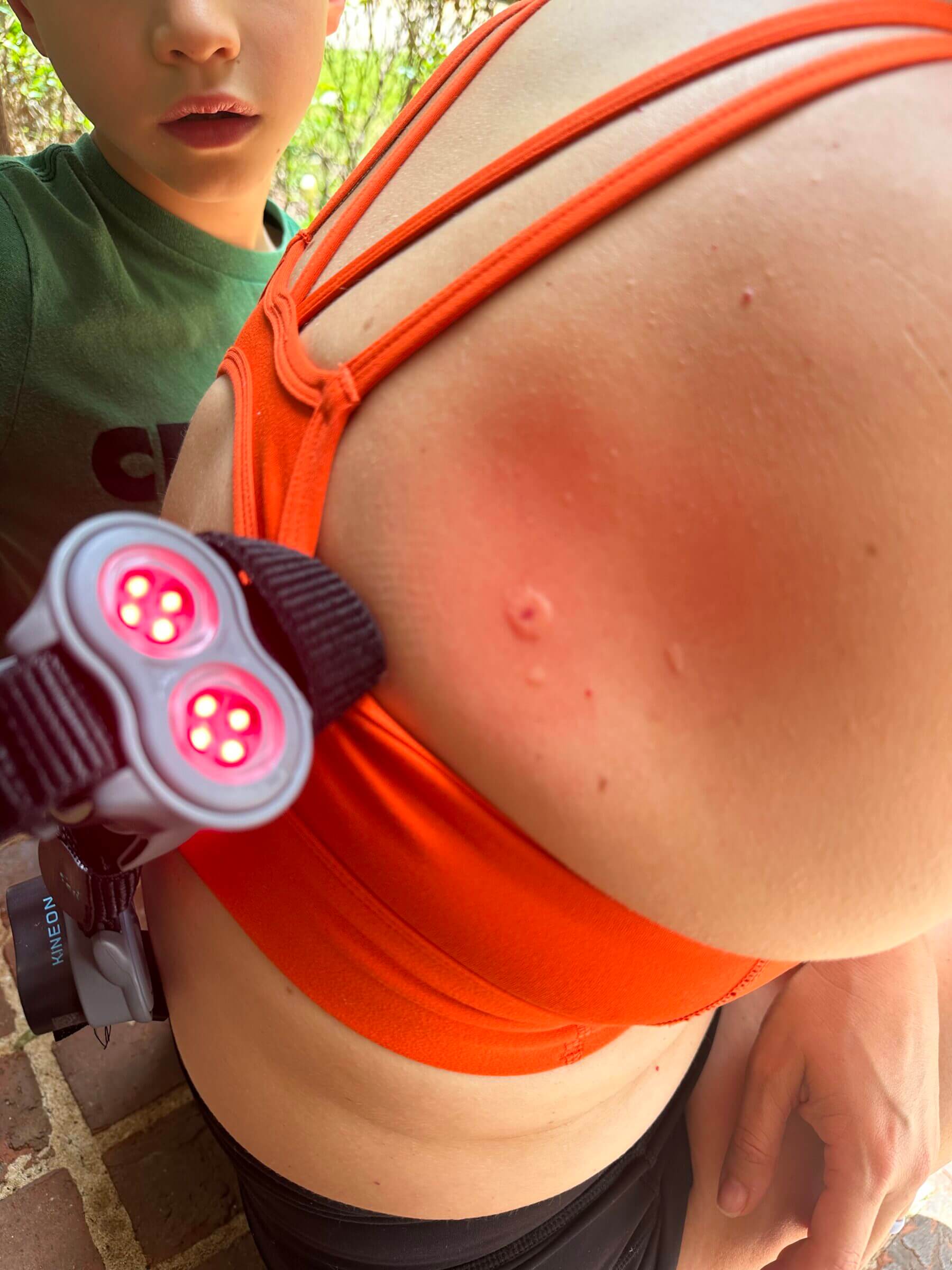
While both infrared and red light can reduce inflammation, red light therapy is especially effective at mitigating signs of inflammation on the skin’s surface. This can be particularly useful for acne, rosacea, psoriasis, eczema or similar medical conditions.
Red light is more effective than infrared light for treating inflammatory skin conditions because of its shallow penetration depth and the amount of energy skin cells can absorb from the red light wavelength.
If you have skin issues on your back or arms, the regular use of an infrared sauna with red light therapy features can offer relief. Of course, tackling the underlying cause of your skin issues is crucial, including dietary factors.
2. Better Sleep
Some studies have shown that red light therapy can help improve sleep quality and increase melatonin levels. While infrared radiation doesn’t appear to influence the circadian rhythm, the infrared heat stress induced by sauna bathing causes an increase in core temperature followed by a rapid drop in core temperature (below baseline) once you get out of the sauna. The drop in body temperature is what helps you fall asleep quicker.
So combining the melatonin-increasing effects of red light with the core temperature-lowering effects of infrared sauna bathing can dramatically improve the quality of your sleep.
3. Enhanced Detoxification

While infrared light helps you sweat and detoxify, red light can further support detoxification at the cellular level by improving cellular function and potentially making cellular detox processes more efficient.
In other words, the better your cells operate and the more energy they produce, the more efficient they are at removing waste – an essential requirement for optimal detoxification from heavy metals or mold exposure.
4. Eye Health
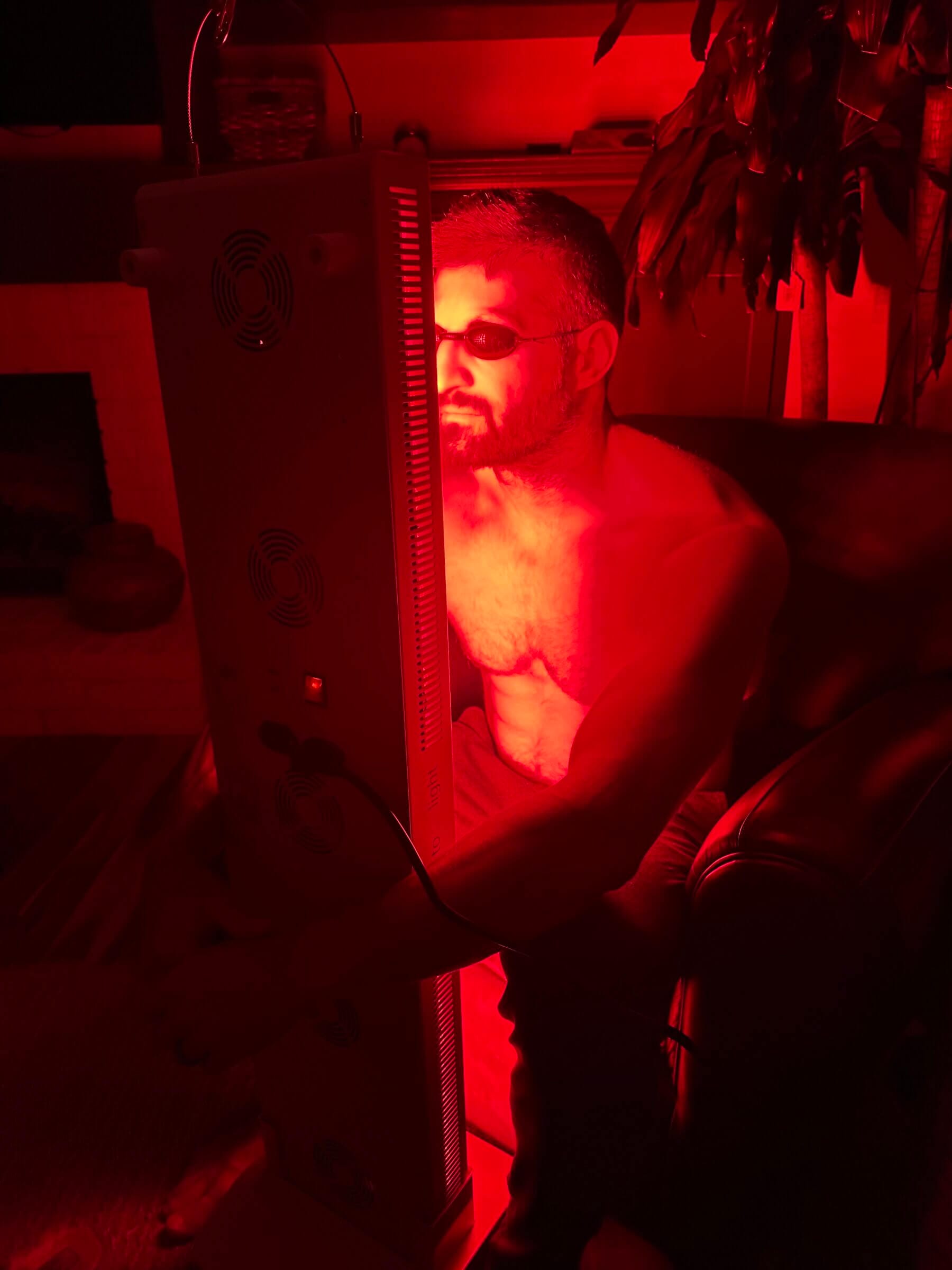
Conventional wisdom suggests that you should wear eye protection when using red light therapy devices.
However, recent studies have demonstrated that exposure to red light may recharge cells in the retina, thus protecting the eyes as we age.
It seems like red light can not only improve mitochondrial function in the skin but also in the eyes, thus supporting the treatment of a variety of retinal conditions, including age-related macular degeneration, retinopathy of prematurity, diabetic retinopathy, Leber’s hereditary optic neuropathy, amblyopia, methanol-induced retinal damage, and possibly others.
Fortunately, I have perfect eyesight. But my wife needed laser surgery for narrow-angle glaucoma, a hereditary condition that restricts the draining of fluid from the eye.
Of course, shining a red light on your back will likely not benefit your eye health. In other words, it’s vital to position yourself in the sauna in a way that exposes your retina directly to the red light.
5. Hair Growth
Red light therapy has been shown to stimulate hair follicles and promote hair growth. Combined with infrared therapy, which improves overall scalp circulation, it may produce more effective results for people experiencing hair loss or thinning.
Fortunately, I have very thick and vigorously growing hair and don’t care much about this particular benefit. But if you’re struggling with hair loss or thinning, I recommend opting for a large sauna so you can lie down and expose the top of your head to one of the light panels.
Alternatively, you can look at a red light therapy helmet, such as the one made by Mito Red Light.
6. Improved Cellular Function
Red light helps with cellular respiration by stimulating the mitochondria to produce more ATP (adenosine triphosphate), the energy currency of cells. Improved cellular function can reduce soreness and improve muscle recovery, mental clarity and overall wellness.
That’s why I’m such a fan of using red light therapy when I get into the office in the morning — because I feel it helps get my engine started.
I also enjoy leveraging red light therapy in the evening to help me relax and recover, especially on days I work out.
But I’m all about productivity optimization, and making red light therapy an integral part of my sauna sessions can mitigate the need for an extra red light therapy session.
On a side note, chronic fatigue syndrome is a hallmark sign of mitochondrial dysfunction. So, if you suffer from this health condition, a sauna with red light therapy might help.
7. Reduced Muscle Fatigue and Pain
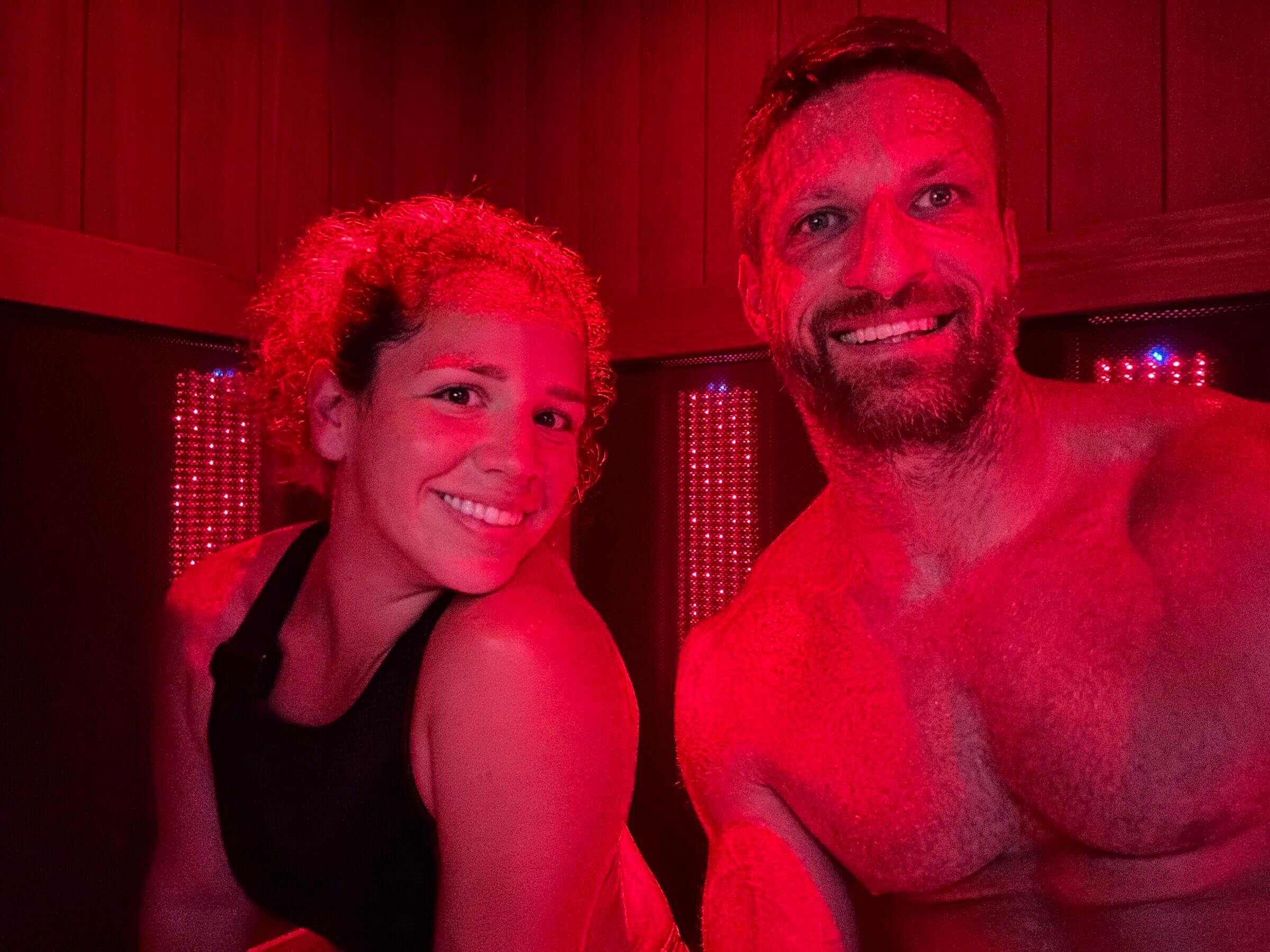
Red light therapy has been shown to help with muscle recovery by reducing inflammation and increasing blood flow to affected areas. Red light could be particularly effective when used in conjunction with infrared light, which also helps with muscle relaxation and pain relief.
In other words, combining red and infrared light therapy in the context of sauna bathing improves circulation and reduces inflammation and pain at several tissue levels simultaneously.
That’s one of the reasons why my wife and I love jumping into our Sunlighten mPulse Smart Sauna after intense CrossFit workouts. Combined with proper nutrition and sufficient sleep, it equips our bodies with everything needed to recover and prepare for the next workout.
8. Skin Rejuvenation
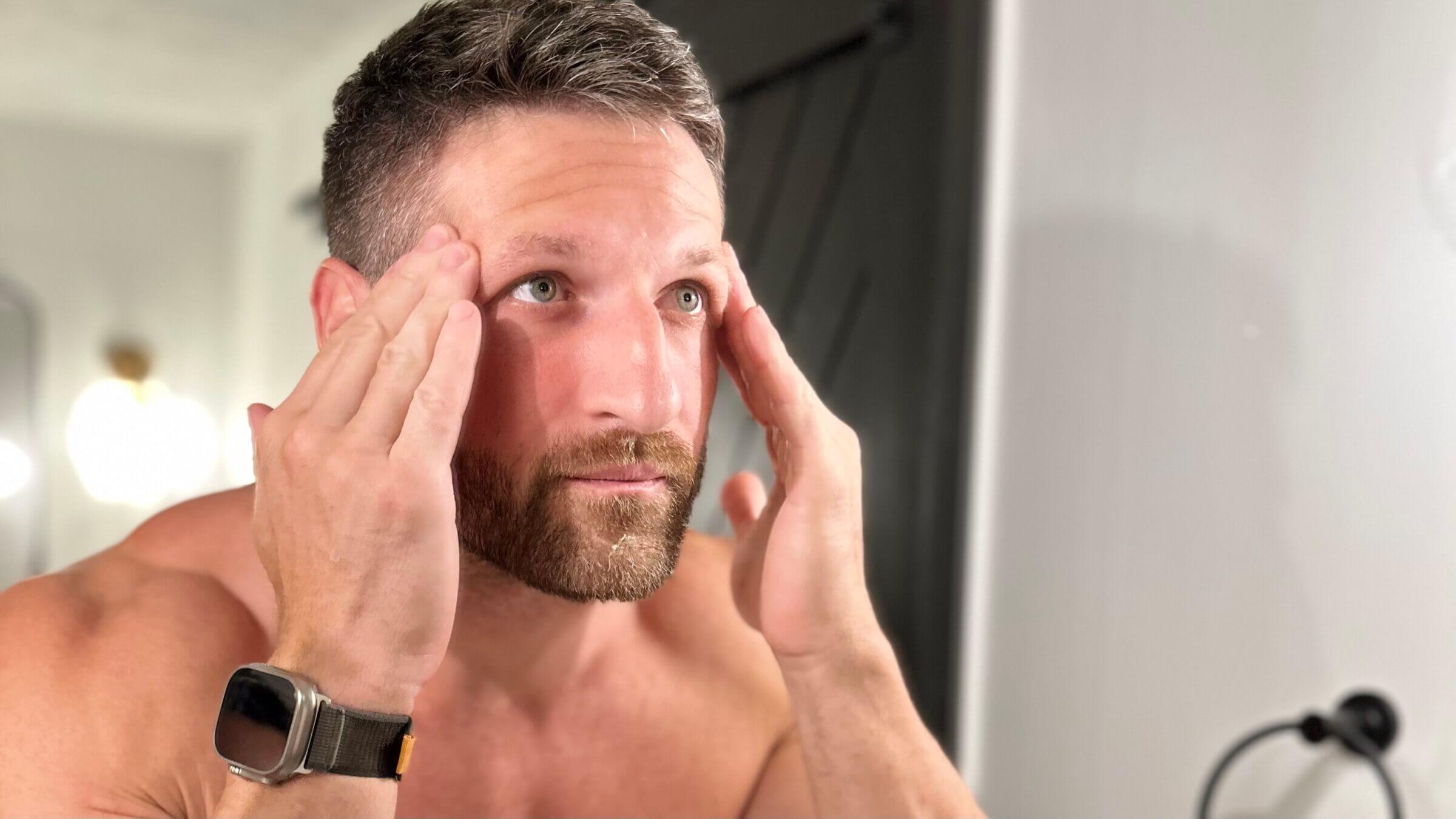
Red light is particularly effective at stimulating collagen production, which is essential for maintaining youthful, elastic and healthy skin. While infrared light focuses more on heating tissue and improving circulation, red light targets skin cells to facilitate anti-aging effects and wound healing.
That’s one of the reasons why red light therapy devices are a favorite among those who are looking to improve the appearance of their skin. For example, my wife uses SolaWave, a red light therapy wand, as part of her daily skincare routine.
Depending on the position of the red light panels in the sauna, there are limits to the treatment areas. For example, our Sunlighten mPulse Smart Sauna has red light panels on the back and side but not in front. So, we still use dedicated red light therapy devices for facial treatments.
What’s the Best Walk-In Infrared Sauna With Red Light Therapy?
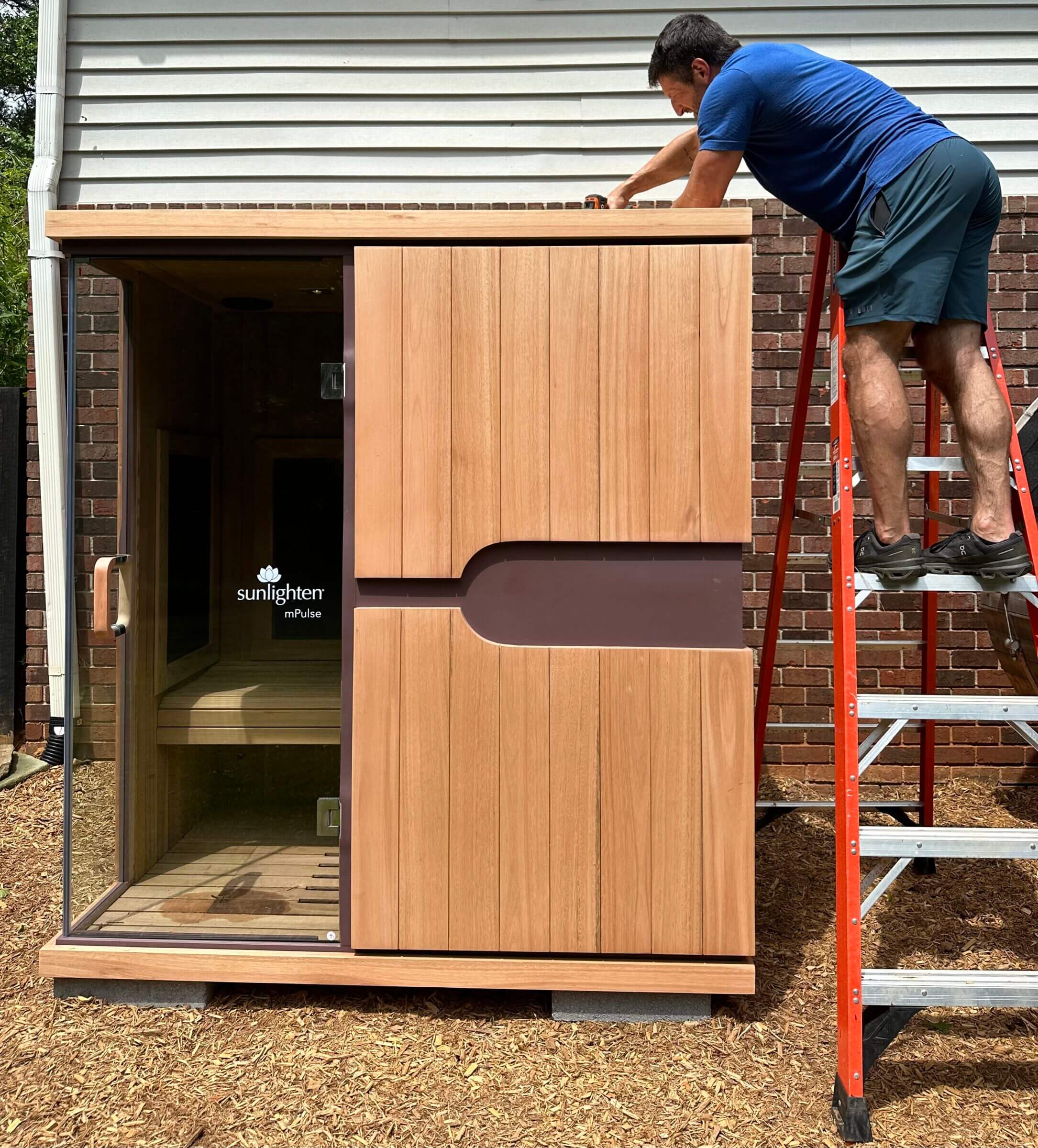
By far, my favorite full-spectrum infrared sauna cabin that includes red light therapy panels is the Sunlighten mPulse Smart Sauna.
I owned the previous two-person Sunlighten mPulse, and recently upgraded to the newer and bigger three-person Sunlighten mPulse (which includes four red light therapy panels).
While the previous model already included full-spectrum infrared heating panels and chromotherapy lights, the upgraded model also features red light therapy. As a result, I can reap the combined benefits of both light technologies with every sauna session.
As I mentioned above, a walk-in sauna cabin might not be the best tool to improve the health and appearance of the facial skin (without potentially positioning myself awkwardly) by facing the heating panels directly. However, the skin on my face isn’t the only part of my body that will eventually show signs of aging. So, I appreciate that I can leverage our sauna to improve the health and appearance of my skin in other areas, such as my back, arms and legs.
I like Sunlighten over some of the other infrared sauna cabins on the market in part because of the company’s dedication to high-quality and non-toxic materials, low EMF emissions, quality heating panels with a high emissivity and outstanding customer support.
For example, many infrared sauna manufacturers use toxic glues or stains that can emit volatile organic compounds (VOCs) and heating panels that emit electromagnetic radiation that can be detrimental to your health and overall sauna experience.
Frequently Asked Questions
The answer to this question depends on your requirements and budget. Most of the infrared saunas on the market are limited to emitting only far-infrared radiation, which is excellent for muscle recovery and pain relief.
Full-spectrum infrared saunas are usually more expensive because they require upgraded heating panels emitting near, mid and far-infrared radiation. Saunas that offer a combination of full-spectrum infrared and red light therapy are likely even more expensive, because they require special heaters and control boards.
If you have the budget and want to squeeze the most benefits out of each sauna session, purchasing a sauna that offers both infrared and red light is the way to go.
But if you’re on a budget, a far infrared sauna (such as the Sunlighten Signature or Sunlighten Amplify) combined with a separate red light therapy panel (that includes near-infrared LEDs), could be a lower-cost alternative.
I talk more about these and other considerations in my in-depth infrared sauna buying guide.
Some studies suggest that light therapy can effectively reduce symptoms of depression and anxiety. For example, Dr. Richard S. Schwartz, associate professor of psychiatry at Harvard Medical School, notes that light affects not only our circadian rhythm but higher-functioning areas of the brain responsible for digestion, hormonal activity and other critical bodily functions.
However, it’s worth noting that most of these studies were conducted using white light. Red light was used for the placebo group and showed no benefits associated with mood disorders.
In other words, there isn’t any strong evidence suggesting that red light improves the symptoms of mood disorders.
Dedicated red light therapy panels, such as the MitoPro 1500, are more powerful and brighter (i.e., they emit more light at higher intensities) than the panels in the Sunlighten mPulse Smart Sauna. Given that, I’d argue that dedicated red light panels offer more benefits for cases where light intensity plays a crucial role, such as hair growth.
But I wouldn’t recommend staring directly into high-intensity red light with your naked eyes; that’s where the lower-intensity panels in our sauna have a leg up.
While infrared sauna therapy is an excellent way to (positively) stress your cardiovascular system by making your heart work harder and dilating your blood vessels, red light doesn’t offer any benefits beyond those of infrared radiation regarding reducing cardiovascular disease risk.
Chromotherapy is popular in alternative medicine circles and is a general term for low-intensity color light therapy. Most chromotherapy bulbs, including the ones built into our Sunlighten mPulse Smart Sauna, have low emissivity and won’t penetrate tissue very far.
As a result, you won’t see the same immediate benefits you can observe with red light therapy. However, chromotherapy is meant as a harmonizing tool to mimic the colors found in nature. If you want to learn more about the potential benefits of chromotherapy, check out this study.
I own a full-spectrum infrared sauna from Sunlighten as well as a traditional sauna from Redwood Outdoors, and wrote a detailed comparison of infrared vs. traditional saunas based on my research and first-hand experience.
To summarize that article, the heat therapy offered by each sauna type has several health benefits, and you can’t go wrong with either one. However, I’d argue that dry saunas have several unique benefits related to skin health and deep muscle penetration that you won’t get to the same extent with wet saunas.
At the same time, by adding a red light therapy panel to your traditional sauna, you can mitigate some of those shortcomings.
In other words, if you already own a traditional sauna, I’d see if I could add red light instead of purchasing an infrared sauna with red light therapy panels built in. If you don’t own a sauna yet but are in the market for one, purchasing a full spectrum infrared sauna with red light, such as the Sunlighten mPulse Smart sauna, is an excellent option.
Both infrared and red light cause oxidative stress on cellular levels. That’s called a hormetic stressor that can make you more resilient and healthier in the long run.
However, it’s important to take your overall stress levels into account before jumping into a sauna at high temperatures. In other words, if you’re already stressed and overwhelmed, I recommend lower-temperature infrared sauna sessions so as not to overwhelm your nervous system.
To learn more about the different types of stressors and how you can use them to improve your health and well-being, check the “Power of Hormesis” episode of my Primal Shift podcast.
Final Thoughts: Adding Red Light to an Infrared Sauna Can Compound the Health Benefits
I’m a huge fan of regular sauna use, red light therapy and photobiomodulation to improve my stress resilience, support my immune system and cardiovascular health and more.
Combining infrared sauna sessions with red light therapy is a huge time saver for me, which is why I decided to upgrade to the new Sunlighten mPulse Smart Sauna.
What are your thoughts on this topic? Do you make sauna bathing and red light therapy a regular part of your wellness routine? Let me know in the comments.

Michael Kummer is a healthy living enthusiast and CrossFit athlete whose goal is to help people achieve optimal health by bridging the gap between ancestral living and the demands of modern society.
Medical Disclaimer
The information shared on this blog is for educational purposes only, is not a substitute for the advice of medical doctors or registered dieticians (which we are not) and should not be used to prevent, diagnose, or treat any condition. Consult with a physician before starting a fitness regimen, adding supplements to your diet, or making other changes that may affect your medications, treatment plan or overall health. MichaelKummer.com and its owner MK Media Group, LLC are not liable for how you use and implement the information shared here, which is based on the opinions of the authors formed after engaging in personal use and research. We recommend products, services, or programs and are sometimes compensated for doing so as affiliates. Please read our Terms and Conditions for further information, including our privacy policy.
